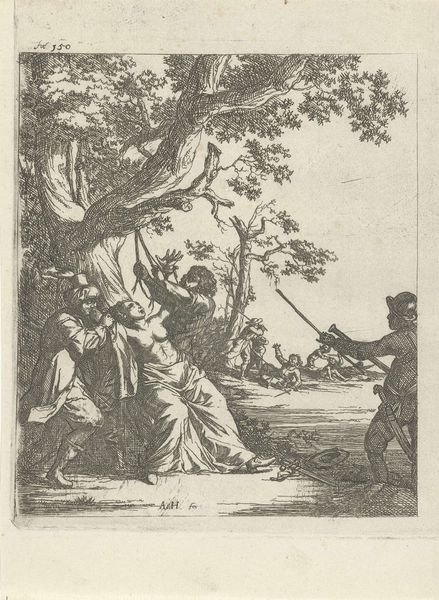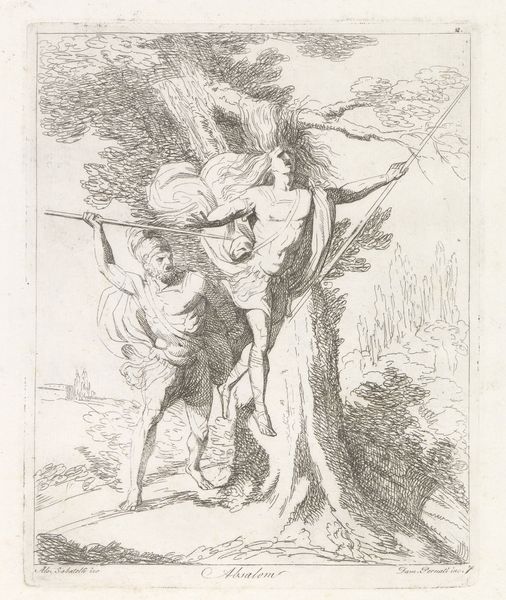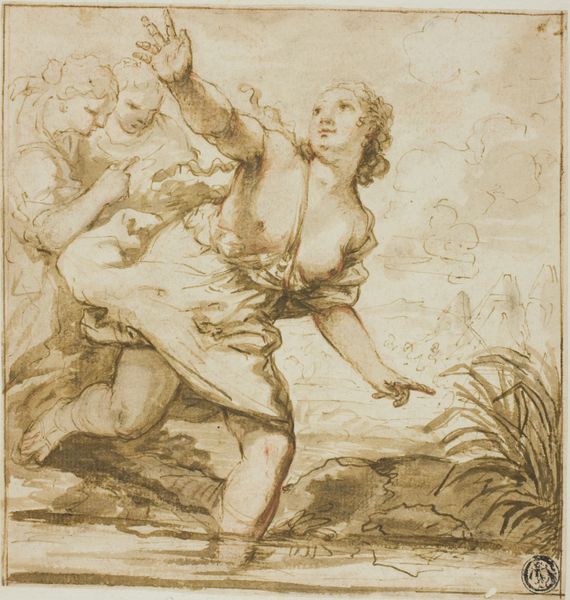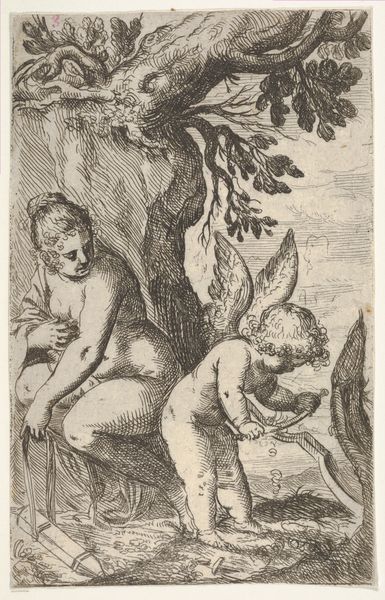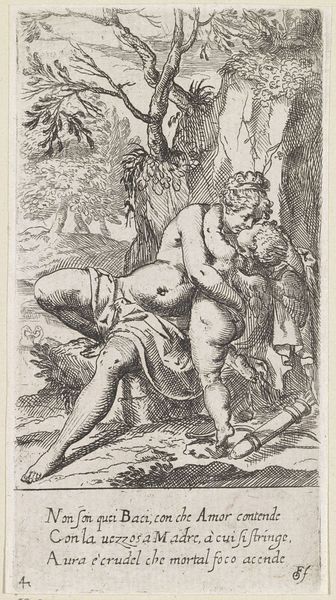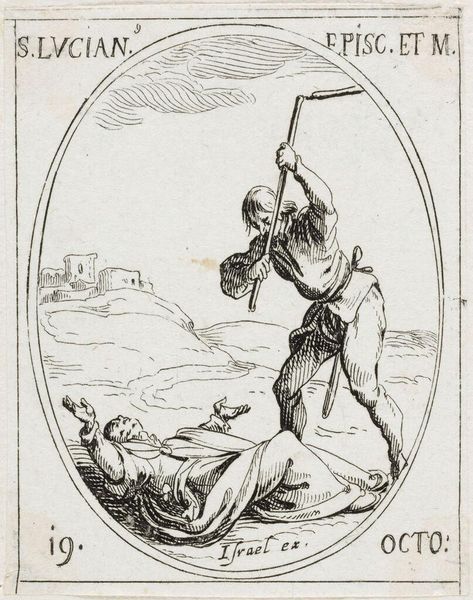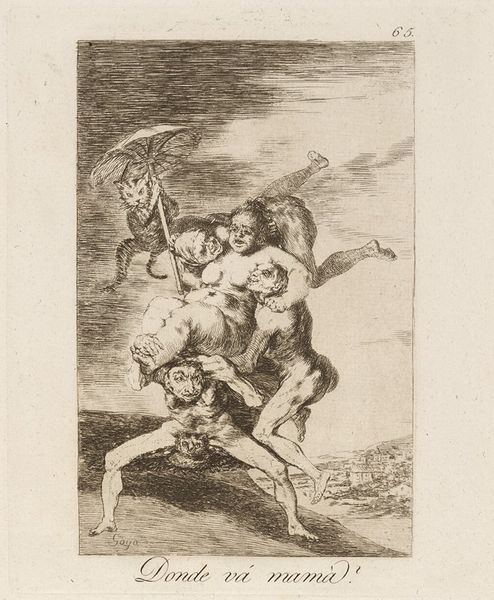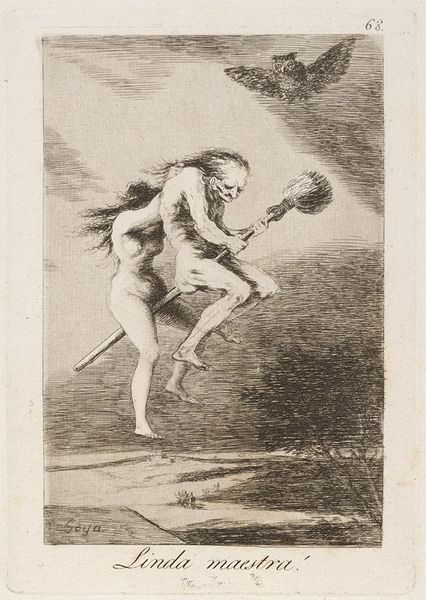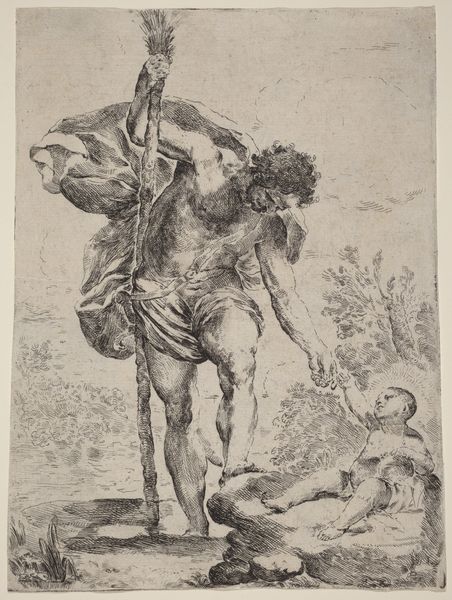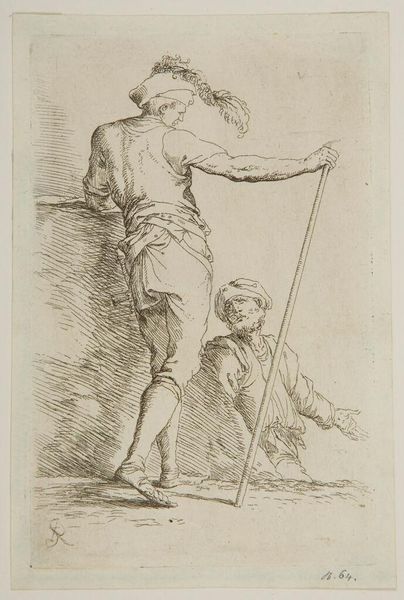
aquatint, print, etching
#
aquatint
#
allegory
#
narrative-art
# print
#
etching
#
caricature
#
figuration
#
romanticism
#
history-painting
Copyright: Public Domain: Artvee
Editor: This is “No hay quien nos desate,” or “Nobody can untie us,” a print by Francisco Goya, made around 1797 using etching and aquatint. It looks incredibly tense; there's this massive owl-like creature looming over two figures intertwined in what looks like a struggle. What's your read on this piece? Curator: The title, “Nobody can untie us,” immediately resonates with notions of inescapable fate or societal entrapment. Notice how the figures strain, caught in a grotesque dance under the gaze of that rather menacing owl. Goya uses the owl—a symbol of darkness, ignorance, even death in some cultures—to cast a long shadow of meaning. Do you feel a sense of specific injustice or a more generalized critique of power structures? Editor: I definitely sense a broader critique. It’s like the figures are weighed down by something abstract, not just each other. That owl definitely adds to the oppressive feeling. It's perched right above them, its gaze intense and unflinching. Is that kind of animal symbolism common for Goya? Curator: Absolutely. Goya was a master of visual language. Consider the Romantic era’s fascination with the sublime and the irrational. He taps into primal fears and anxieties using these striking symbols. What’s intriguing here is how the composition seems almost to trap the figures. They're tangled in a web of their own making, yet overseen by something external and judgmental. Does it remind you of other images of entanglement or captivity you’ve seen? Editor: It makes me think about political cartoons actually, but also religious paintings of temptation or moral struggle. So Goya's not just depicting something literal, he's using this imagery to talk about bigger themes? Curator: Precisely. He uses the readily understandable to hint at unseen and powerful forces. It makes you wonder what bonds hold us captive, and who—or what—is watching. Editor: This makes me see the artwork as not just a snapshot but a kind of commentary. I now appreciate how Goya used these symbolic elements to build layers of meaning and provoke thought. Curator: Indeed. Goya presents a visual puzzle that challenges us to confront uncomfortable truths about human nature and society’s constraints. Art reminds us of the complex interplay between visible and invisible powers that define human experience.
Comments
No comments
Be the first to comment and join the conversation on the ultimate creative platform.

